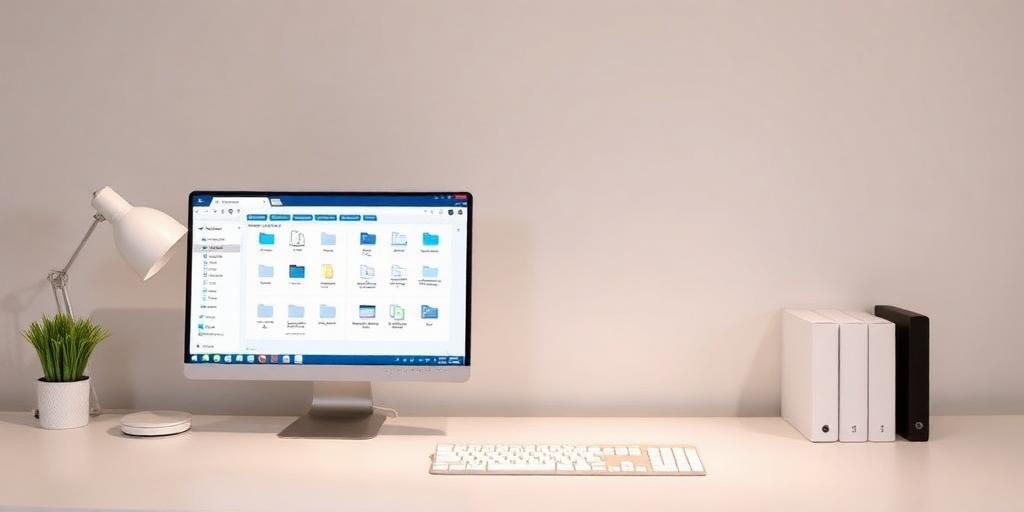How to Declutter Your Digital Workspace
In today's hyper-connected world, our digital workspace has become an extension of ourselves. Just like a physical office, it can quickly become cluttered and disorganized, leading to decreased productivity and increased stress. Mastering the art of digital decluttering is essential for maintaining focus and efficiency. Here’s a comprehensive guide to help you transform your digital environment into a streamlined haven.
1. Assess and Categorize Your Digital Assets
Begin by taking inventory of all your digital items. This includes files, folders, applications, browser bookmarks, and email inboxes. Categorize these items based on their relevance and frequency of use.
- Active Projects: These are files and applications you use regularly.
- Reference Material: Documents and resources needed for occasional reference.
- Archived Items: Old projects or documents that you may need in the future but don't access often.
- Obsolete Data: Files, applications, and emails that are no longer needed.
2. Streamline Your File Management System
A well-organized file system is crucial for efficient digital decluttering. Implement a consistent naming convention for files and folders. Use descriptive names that accurately reflect the content and purpose of each item.
- Create a Logical Folder Structure: Design a hierarchical folder structure that mirrors your workflow. For example, use folders for departments, projects, and clients.
- Use Cloud Storage Wisely: Leverage cloud storage solutions like Google Drive, Dropbox, or OneDrive to keep your files accessible and backed up. Consolidate files from multiple cloud services into a single, unified system.
3. Declutter Your Applications and Software
Over time, we accumulate numerous applications and software programs, many of which are rarely used. Regularly review your installed applications and remove those that are no longer necessary.
- Uninstall Unused Applications: Go through your list of installed programs and uninstall those you haven't used in the past six months.
- Consolidate Redundant Tools: Identify applications that perform similar functions and choose the one that best meets your needs. Eliminate the rest.
4. Optimize Your Email Inbox
Email inboxes are notorious for becoming a source of digital clutter. Implementing effective email management practices can significantly reduce stress and improve productivity.
- Unsubscribe from Unnecessary Emails: Take the time to unsubscribe from newsletters, promotional emails, and other subscriptions that you no longer find valuable.
- Use Filters and Labels: Create filters and labels to automatically sort incoming emails into relevant categories. This helps prioritize important messages and keeps your inbox clean.
- Archive or Delete Old Emails: Regularly archive or delete emails that are no longer needed. Consider setting up an automatic archiving system to move older emails out of your inbox.
5. Manage Browser Bookmarks and Extensions
Browser bookmarks and extensions can quickly become overwhelming. Regularly review and organize your bookmarks, and remove any extensions that you no longer use.
- Organize Bookmarks into Folders: Create folders for different categories of bookmarks, such as research, news, and social media.
- Remove Unused Extensions: Disable or uninstall browser extensions that you no longer need. Too many extensions can slow down your browser and compromise your privacy.
6. Automate Your Digital Decluttering
Automating certain digital decluttering tasks can save time and effort. Use software and tools to identify and remove duplicate files, manage passwords, and optimize your system's performance.
- Use Duplicate File Finders: Employ software to scan your hard drive for duplicate files and remove them.
- Implement a Password Manager: Use a password manager to securely store and manage your passwords. This eliminates the need to keep track of numerous passwords manually.
7. Establish a Routine for Ongoing Maintenance
Digital decluttering is not a one-time task; it requires ongoing maintenance. Establish a routine for regularly reviewing and organizing your digital workspace.
- Schedule Regular Decluttering Sessions: Set aside time each week or month to declutter your digital environment.
- Stay Consistent: Adhere to your established file management and email management practices to prevent clutter from accumulating.
By following these steps, you can transform your digital workspace into a streamlined, efficient environment. A decluttered digital workspace not only enhances productivity but also reduces stress, allowing you to focus on what truly matters.
Conclusion
Decluttering your digital workspace is an essential practice for enhancing productivity and reducing stress in our increasingly digital lives. By assessing and categorizing your digital assets, streamlining your file management system, decluttering applications, optimizing your email inbox, and establishing a routine for ongoing maintenance, you can create an efficient and organized digital environment. Take control of your digital space and experience the benefits of a clutter-free digital life.









